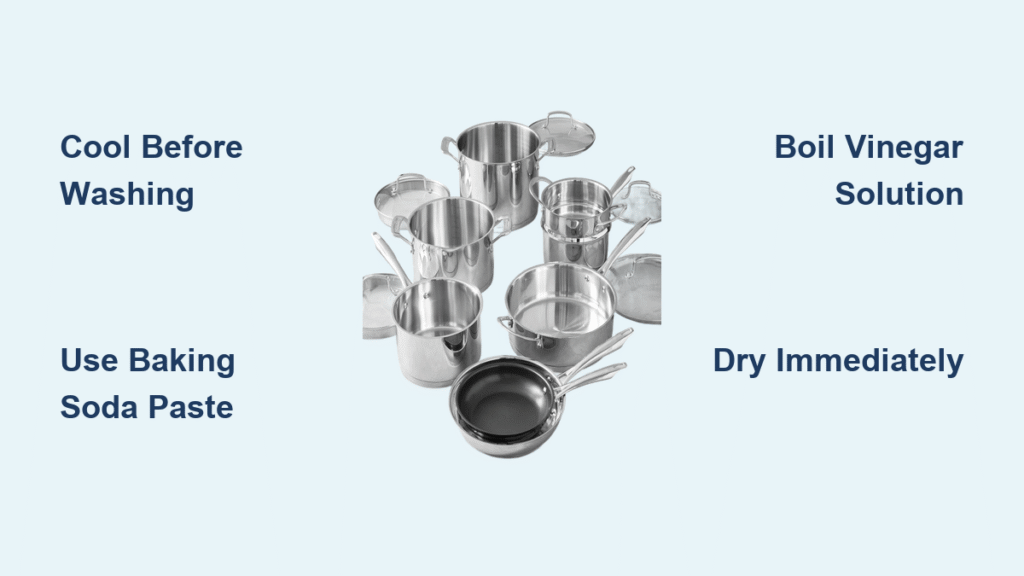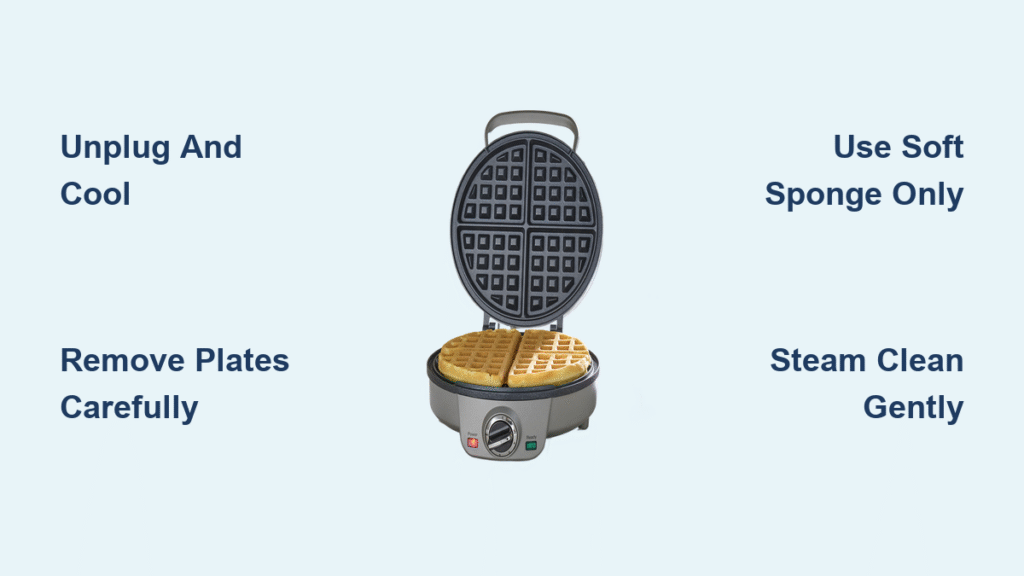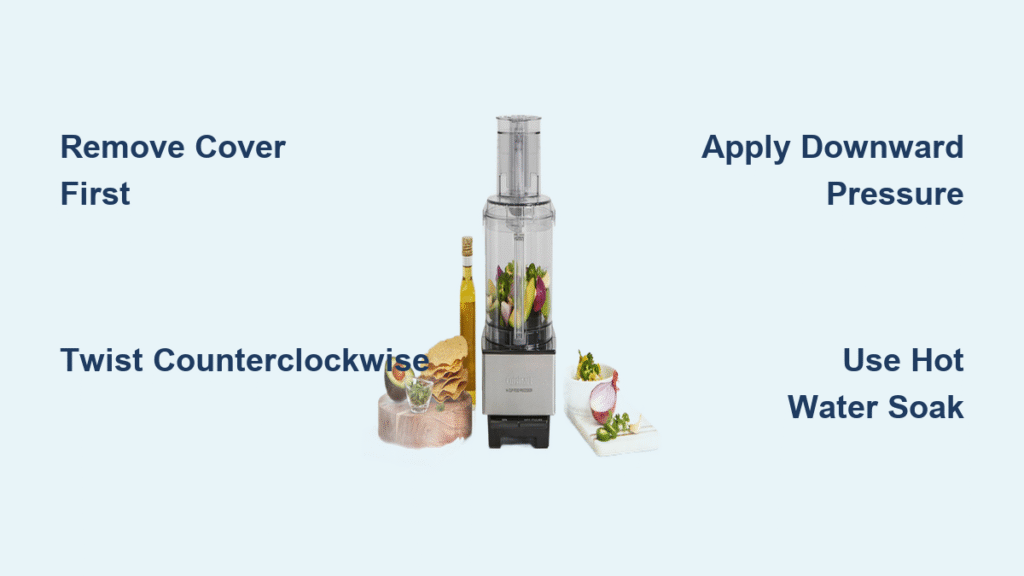Your Cuisinart stainless steel pans should gleam like professional kitchen equipment after every meal, but stubborn stains and burnt-on residue often turn this dream into daily frustration. Whether you’re dealing with everyday cleanup or years of built-up grime, the right approach makes all the difference between preserving your cookware’s chromium shine and permanently damaging its surface. Knowing how to clean Cuisinart stainless steel cookware properly protects your investment while ensuring optimal cooking performance for years to come.
This guide transforms your cleaning routine with proven methods that protect the protective oxide layer while removing even the toughest messes. You’ll discover why handwashing beats dishwasher convenience, how to tackle rainbow discoloration with kitchen staples, and when to escalate from gentle methods to powerful commercial cleaners. Most importantly, you’ll learn the progressive cleaning techniques that match the effort to the problem—saving you time and preserving your cookware’s integrity.
Never Rinse Hot Cuisinart Stainless Steel Pans
Thermal shock from cold water on hot metal permanently warps your pans—a costly mistake many home cooks make. Always let your Cuisinart cookware cool naturally on the stovetop or a heat-resistant surface for 15-20 minutes after cooking. You’ll know it’s safe to handle when the pan feels warm but comfortable to touch (around 120°F).
While waiting for proper cooling, remove excess oil and loose food particles with a silicone spatula or paper towel. This prevents these bits from hardening into cemented residue during cooling. For stuck-on food, add a splash of hot water to warm pans and let it sit briefly—this simple deglazing step loosens fond before full cleaning begins. Never skip this step, as hardened food particles require much more aggressive cleaning later.
Immediate Post-Cooking Care Checklist
- Allow pan to cool naturally for 15-20 minutes
- Remove excess oil while pan is still warm
- Deglaze with hot water for stuck-on bits
- Never immerse hot cookware in cold water
Perfect Your Daily Handwashing Routine
Handwashing preserves your Cuisinart’s finish far better than dishwasher cycles despite the convenience. Fill your sink with warm water and a few drops of mild dish soap—Seventh Generation unscented works excellently for stainless steel. Dishwasher detergents contain harsh chemicals that dull the finish over time, even though Cuisinart labels its cookware as dishwasher-safe.
Essential Handwashing Steps
- Wash with soft cloths or OXO Good Grips brushes
- Avoid steel wool or aggressive scrubbing pads
- Rinse thoroughly to remove all soap residue
- Dry immediately with lint-free towels to prevent water spots
Pro tip: Hard water leaves mineral deposits that dull your finish. If you notice cloudy spots forming despite quick drying, wipe the pan with a cloth dampened in white vinegar, then rinse and dry again. This simple step restores brilliant shine without harsh chemicals and should become part of your regular cleaning process.
Remove Stubborn Residue Without Scratching
:strip_icc()/HowtoRemoveDiscolorationonStainless-SteelPans_BakingSoda-Step-03-8a9bbe4b05854e88b6de77fe6773e46f.jpg)
Level 1: Soaking Strategy for Everyday Stains
Fill the affected pan with warm, soapy water and let it soak for at least one hour. This softens cemented food particles without aggressive scrubbing. For heavily soiled pans, extend soaking time to overnight—it won’t harm your stainless steel. Never use bleach or ammonia-based cleaners, as these can react with the metal and cause permanent discoloration.
Level 2: Baking Soda Power Paste for Moderate Stains
Create a paste using equal parts baking soda and water for moderate stains. Spread this mixture across affected areas and let it dwell for 15-30 minutes. Use circular motions with a soft cloth or nylon scrubby to lift stains gently. For extensive discoloration, create a baking soda slurry (¼ cup baking soda to water) and bring to a boil. While wearing silicone mitts, scrub the hot surface with additional baking soda paste—the heat accelerates the cleaning action dramatically.
Level 3: Vinegar Boiling Method for Tough Stains
Combine 1 part white vinegar with 3 parts water in your stained pan. Bring this solution to a boil, then simmer for 5-10 minutes. Use a wooden spoon to scrape loosened debris as it bubbles. Let the solution cool completely before final scrubbing and rinsing. This method works particularly well for rainbow discoloration caused by high-heat cooking.
Level 4: Commercial Cleaner for Extreme Cases
When household methods fail, Bar Keepers Friend (BKF) delivers professional results. Apply the powder to cool, wet surfaces and scrub within one minute of application. BKF restores the like-new silver appearance that baking soda can’t match, making it worth keeping on hand for annual deep cleaning. Always use gloves when working with BKF to prevent skin irritation, and never heat the cleaner—it’s designed for cool application only.
Restore Severely Neglected Cuisinart Cookware
Deep Boiling Restoration Method
For pans neglected for years, submerge them completely in a large stock pot filled with water and ¼-½ cup baking soda. Boil for 15-30 minutes, rotating the pan periodically for even exposure. Remove with tongs and silicone mitts, then scrub while hot using additional baking soda slurry. This intensive method can revive cookware you thought was beyond saving.
Tackle Specific Stain Types Effectively
- Olive oil spray residue: Brown, baked-on stains from spray applications require aggressive treatment. Start with BKF and a nylon scrubby, then escalate to overnight baking soda paste if needed.
- White mineral deposits: Calcium buildup creates cloudy spots—treat with boiled baking soda and vinegar mixture, ensuring the solution covers all affected areas.
Prevent Future Cleaning Nightmares
Perfect Your Cooking Technique
Always preheat empty pans before adding oil—oil should shimmer when ready, not smoke. Increase heat gradually to prevent warping and the rainbow discoloration that comes from rapid temperature changes. Salt timing matters: Add salt only after water reaches boiling point to prevent pitting corrosion. This small adjustment dramatically extends your cookware’s lifespan.
Smart Storage Solutions
Stack pans with soft cloths, felt protectors, or paper towels between them to prevent scratching. Ensure complete dryness before storage to avoid water spot formation. Even moisture trapped between nested pans can create stubborn mineral deposits over time. Never store pans with damp paper towels between them—this creates ideal conditions for mineral deposits.
Cuisinart Heritage Line Special Care Instructions
The Heritage stainless steel line responds exceptionally well to the vinegar and baking soda boiling method. Use just enough solution to cover affected residue areas, and stick with white vinegar rather than apple cider varieties for consistent results. After boiling and cooling, wipe clean—these pans typically restore beautifully with minimal scrubbing. Avoid abrasive pads on Heritage line cookware, as the finish is more delicate than standard stainless steel.
Time Investment Guide for Busy Cooks
- Routine cleaning: Under 5 minutes per pan
- Stubborn stain removal: 15-30 minutes using standard methods
- Extreme restoration: 30+ minutes including boiling time and multiple treatment cycles
Quick win: Keep a dedicated soft cloth and mild soap near your sink. Immediate attention prevents hours of restoration work later. The key to efficient cleaning is matching your effort to the problem—don’t escalate to boiling methods when a simple soak would suffice.
Decode Discoloration Patterns Correctly

Rainbow Effect
Heat-induced oxidation creates colorful patterns—treat with vinegar solution to restore uniform appearance. This discoloration doesn’t affect performance but impacts aesthetics. This is completely normal with high-heat cooking and doesn’t indicate damage to your cookware.
Cloudy Appearance
Mineral deposits from hard water create dull, cloudy surfaces. Vinegar treatment followed by club soda rinse usually restores brilliant shine. This is preventable with immediate drying after washing.
Brown Patina
High-heat cooking develops brown discoloration that’s actually normal. You can remove it with BKF, but expect it to return with continued searing and browning. This patina doesn’t affect cooking performance—many professional chefs consider it a badge of honor.
Essential Tool Arsenal for Perfect Results

Basic Cleaning Kit
- OXO Good Grips long-handled dish brush
- Fresh Scotch-Brite scouring pads or soft Dobie pads
- Lint-free drying towels
- Seventh Generation unscented dish liquid
Heavy-Duty Restoration
- Bar Keepers Friend powder
- White vinegar
- Baking soda
- Silicone oven mitts for hot pan handling
- Glam-Gloves for chemical protection
Your Cuisinart stainless steel cookware represents a significant investment in quality cooking tools. With these targeted cleaning methods, you’ll maintain that investment while ensuring peak performance for decades of delicious meals. Start with gentle daily care, escalate progressively for stubborn stains, and remember that prevention through proper cooking technique saves countless hours of restoration work. Most importantly, never compromise on the cooling protocol—rushing this step causes irreversible damage that no cleaning method can fix.





